Ticks and fleas are more than just a nuisance for dogs and cats. These blood-sucking pests can cause diseases, including Lyme disease, bubonic plague, tularemia, and Rocky Mountain spotted fever.
But it’s not just your pets who are at risk of getting sick. If your dog or cat has fleas or ticks and comes into your house, they could easily transfer these nasty creatures onto you.
Luckily, there is a simple, natural, and effective method for killing fleas and ticks on your pets and controlling infestations in your home and yard. Of course, we’re talking about diatomaceous earth.
In this article, we’ll show you how to use diatomaceous earth for ticks and fleas on your pets, infestations in your home, and keep these pests out of your yard. We’ll also take a deep dive into what diatomaceous earth is and how it works to kill bugs like fleas and ticks.
Disclosure: As an Amazon Associate I earn from qualifying purchases. However, this does not impact our reviews and comparisons. All opinions are our own we pride ourselves on keeping our articles fair and balanced. For more info see our disclosure statement.
How To Use Diatomaceous Earth To Kill Ticks and Fleas on Dogs
When using diatomaceous earth (DE) to battle fleas and ticks on your pets, you must employ a three-prong approach.
First, you’ll need to target the pests hiding in your pet’s fur. You’ll also need to treat the areas in the house that they spend a lot of time in. Lastly, you will need to work to repel these bugs from your yard.
These steps are important to assure that you eradicate all the fleas and ticks from your pet’s surroundings so that they don’t become reinfected.
Safety Precautions
Treating Your Dog for Fleas and Ticks
One of the best reasons to choose DE to treat fleas and ticks is that it is completely safe to use around—and on—dogs and cats. Unlike commercial topical pest treatments, DE doesn’t contain any chemicals or pesticides that could hurt your pet.
To treat a pet in the midst of an active flea infestation or who has ticks on their body, you will need to:
- Purchase Food grade diatomaceous earth which is safe to use around people and pets. You should not use “filter grade” or “non-food grade” around the home as it can cause severe lung irritation.
- Take your pet and food-grade DE outdoors and liberally sprinkle the powder onto your pet’s coat. Use your gloved fingers to work the dry powder down to their skin where these pests are likely to be hiding. Be sure to cover as much of their body as possible, but do not get DE in their eyes or nose.
- Allow the powder to sit on your pet’s fur for at least 72 hours. Most fleas will be killed within a few hours of application, but leaving it on for a few days assures that fleas that weren’t directly dusted have a chance to move onto areas of skin that have DE on them. You can leave DE on for up to a few weeks as long as your pet’s skin isn’t getting dried out by the powder.
- After the powder has had a chance to work its magic, it’s time to bathe your pet. Once they are soaped and rinsed, use a flea comb to remove dead fleas from their coat.
You will likely need to repeat this process every few weeks if the infestation is severe. Continue to use your flea comb daily to check for signs of reinfestation in your pet’s coat.
Treating Your Home for Fleas and Ticks
Once you’ve dusted your pet with diatomaceous earth, you’ll need to treat all the areas in the home where they tend to hang out. This may include pet beds, litter boxes, your bed, carpets, and feeding areas.
- Start by cleaning the area first. For beds and bedding, wash all covers and blankets on hot in the washing machine and dry thoroughly in the dryer. For flooring, use a vacuum to clean all debris from the floor and surrounding crevices.
- Next, dust the area with food-grade DE. For pet beds, dust the bed itself, and the flooring around and under the bed. For litter boxes, dust the area around, under, and on top of the litter. For human beds, dust the mattress and floor around the bed, then place clean sheets over the mattress.
- Leave the DE in place for as long as you can stand—a few days at the minimum, but a few weeks is optimal.
- When ready, vacuum the DE up. Be sure to stop and clean out your vacuum’s filter regularly to assure the small particles don’t clog it up.
Note: This is a messy process and will require you to live in a dusty house for a bit. But it is well worth it to get rid of fleas and ticks without having to douse your home in chemicals.
Treating Your Yard for Ticks and Fleas
Treating your pet and home with DE is key to getting rid of flea and tick infestations, but you can’t prevent future infestations without also treating your yard.
Unfortunately, completely ridding the outside world of these pests isn’t possible. But, you can do a lot to make your yard less appealing to fleas and ticks and use DE to keep their numbers in check.
Before you apply DE as a means to kill fleas and ticks in your yard, you should first work to reduce the amount of flea and tick habitat on your property. You can do this in several ways:
- Keep grass short. Long grass is a haven for ticks and fleas alike. Keep your lawn to about 3 or 4 inches in length. Any longer, and you give these pests a great hiding spot. Any shorter, and you take away prime habitat for spiders and ants, both of which prey on fleas and ticks.
- Use cedar mulch. Bugs hate cedar mulch, fleas and ticks included. By mulching your garden beds, especially those around your foundation, with cedar, you can help reduce insect traffic dramatically.
- Avoid overwatering. There’s a reason spring is the worst time for fleas and ticks and that’s because these pests are most active in moist environments. To help limit their activity to just the rainy months, be sure to only water as much as your yard needs and work to prevent excess moisture buildup from sprinkler use.
- Clear debris. These creepy crawlers love dark, tight spaces. By clearing piles of brush, dead plants, and other debris from your yard and especially near your foundation, you can help evict fleas and ticks before they establish.
Once you’ve done some work to make your yard less desirable to pests, it’s time to use DE to kill those fleas and ticks already living on your property.
To do this, you will need a few tools:
- Food grade diatomaceous earth
- Applicator
- Gloves
- Breathing Mask
You should target areas of your yard where you know fleas and ticks are active, such as watering holes frequented by wildlife, woodpiles, and your pet’s favorite hangout spots. It can also be helpful to create a barrier line around your foundation to prevent pests from crawling directly into your home in search of a blood meal.
- Start by using your DE applicator to sprinkle (or spray if using a wet application) in the area of concern. If targeting your home’s foundation, create a thick line of DE from the base of the foundation around your house. This line only needs to be about an inch thick to thwart ticks, but fleas are jumpers, so the thicker, the better for these pests.
- There is no need to clean up the DE after putting it down; it will wash away with water and blow away in windy conditions. Continue to reapply each time this happens throughout the flea and tick season.
- You will also want to reapply in the fall when cool temperatures drive pests into your home.
What Is Diatomaceous Earth?
Diatomaceous earth is a silica dust that’s made from tiny, fossilized sea creatures called diatoms. Diatoms are microscopic, but they leave behind tiny, porous shells that collect on the bottom of the sea. When these shells fossilize, they create an extremely porous powder that we call diatomaceous earth.
Since diatoms have been around for hundreds of millions of years, and since a lot of dry land was once underwater, rich deposits of diatomaceous earth can be found throughout the world.
This versatile powder isn’t just used for killing pests. It’s also used as a fire retardant, as an absorbent, as a kitty litter ingredient, as an abrasive, and even as a stabilizer to keep explosives from going boom when you don’t want them to. Some grades are even edible, and are used to track nutrient absorption in farm animals.
Top Quality DE
Food Grade Diatomaceous Earth
- A natural product composed of ground Diatomaceous Earth (fresh water type) Amorphous Silica – food grade
- Produced in the USA
- A natural, organic insect killer, DE kills by physical action and not chemical
- Use on animals, plants, stored grain & around the house to control household & plant pests
How Diatomaceous Earth Kills Ticks and Fleas
Diatomaceous earth is effective as a pesticide because it’s so absorbent. Arachnids like ticks, as well as insects, depend on tiny pores in their shells to breathe. These pores need to be moist to function, so bugs’ exoskeletons have a thin, oily coating.
Diatomaceous earth is fine enough to stick all over bugs like powdered sugar on a donut. This dries them out, causing their pores to shrink and ultimately suffocating them.
There’s a common misconception that it works by cutting insects. This is only true when it’s used on snails, slugs, and mollusks. Their skin is delicate enough for diatomaceous earth to cut it. Ticks’ exoskeletons are far too tough for this. Diatomaceous earth is also effective against spiders, bed bugs, and ants. To learn more about other uses for this powder in your home, check out this article.
How Safe is Diatomaceous Earth for Dogs?
Diatomaceous earth is safer than chemical pesticides. It is 100% natural and has no chemical effects on the body. You can even eat it – provided it’s been sterilized.
Note: The only real danger posed by DE to humans and pets is that the tiny particles can enter the respiratory tract.
When you or your dog breathe DE in, it has the same effect as concrete and other silica dust. The tiny particles can become trapped in your alveoli, the tiny air sacs in your lungs that absorb oxygen. Over time, they can make tiny cuts, increasing the risk of cancer and emphysema.
One easy way to reduce this risk is to use food-grade DE. This type contains only 0.5% to 2.0% of crystalline silica—the form that’s dangerous to breathe in. Filter grade DE, by contrast, contains over 60% crystalline silica.
Food grade DE is safe to use on and around pets. However, you should avoid direct contact with the nose and eyes. If they breathe some in or lick it off their coat, this type won’t cause any problems.
Note: A less serious concern is that diatomaceous earth dries out your skin. You won’t suffocate from this as a tick would, but it can cause itching and flaking if you don’t wash it off and moisturize afterwards.
Most pets can handle being coated in DE for a few days to a few weeks without getting overly irritated. But it is worth checking for redness on their skin while treating with DE. If the skin seems irritated or they begin itching a lot, wash them with a hydrating shampoo and shorten treatment sessions in the future.
Diatomaceous Earth: Effective for Fleas and Ticks
DE is an effective solution to flea and tick problems around the home as long as it is used to fight the issue everywhere it exists.
This means that DE must be applied to your pets, to areas in your home that they frequent, and to your yard where the pests were first introduced. By tackling these three areas simultaneously and repeating treatment as needed to reduce pest numbers, you and your pet can find some much-needed natural relief from ticks and fleas.
Have more questions on how DE can be used to fight fleas, ticks, and other pests? Comment below!
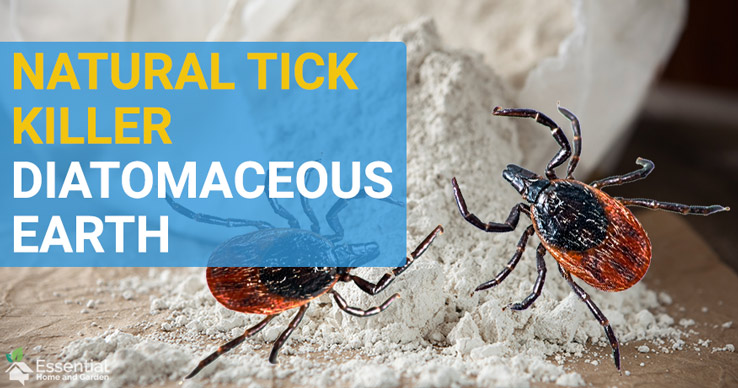
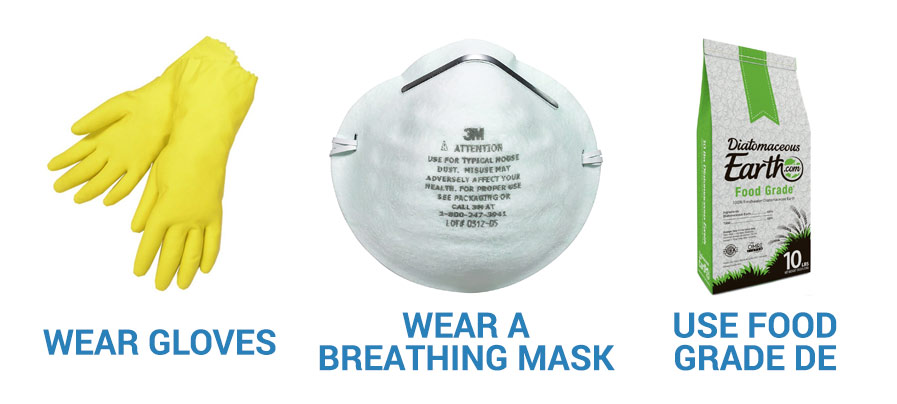
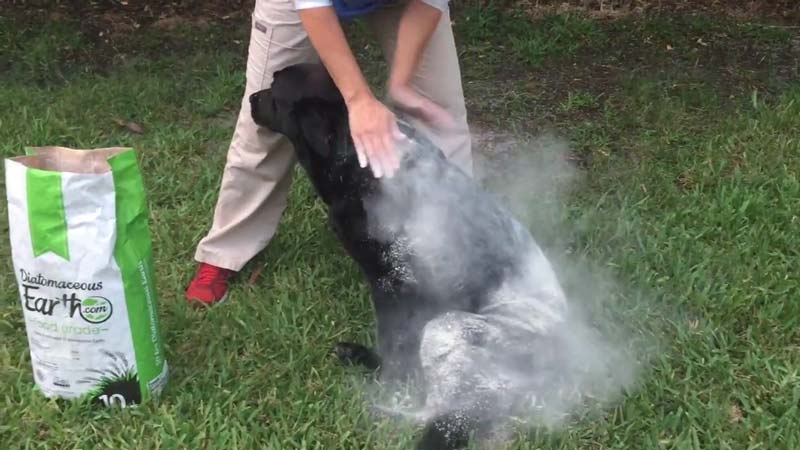
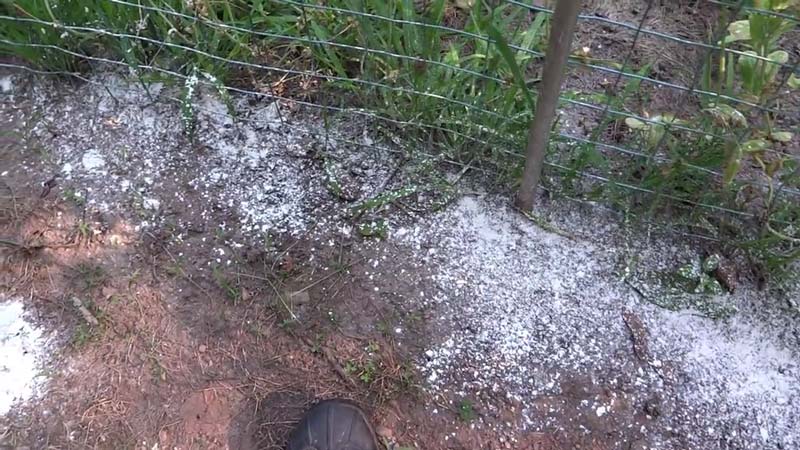


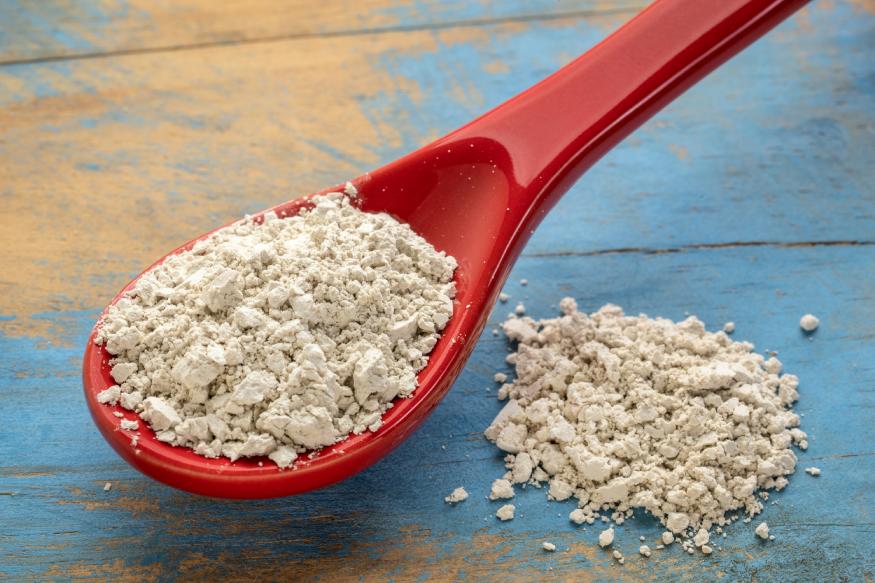
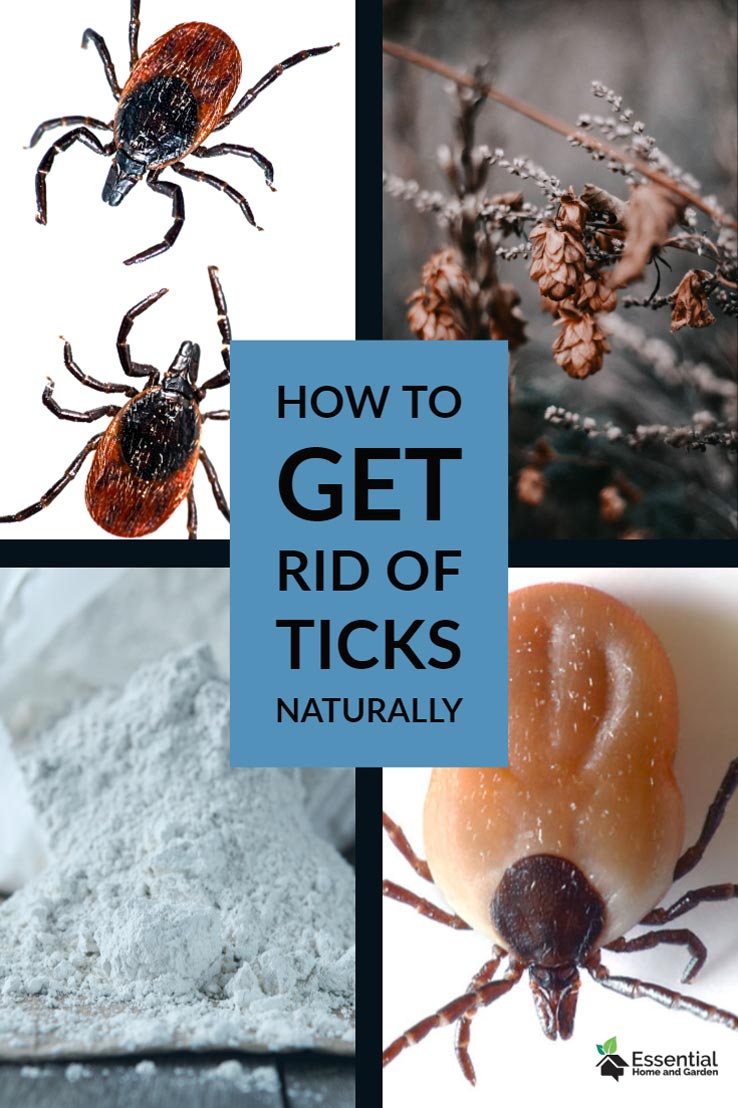
What if you put DE on the ticks on your dog and they don’t fall off?
So my dog had a huge tick it fell off of her. what should I do next cover her with de powder? So she won’t get anymore?
My dog had a tick behind his leg dug in I put d.e.powder. food grade on it twice and used colloidal silver drops twice in his mouth and a few drops on the spot the tick was and he was cleared up in just a couple of days. The vet said we don’t get lym disease here so not to worry. I do still worry. He is fine.
I’m hoping it’s safe for my cat.
100% safe we’ve used this for years we even sprinkle on our pets food to help with their digestive system and she is 15 years old and healthier than ever